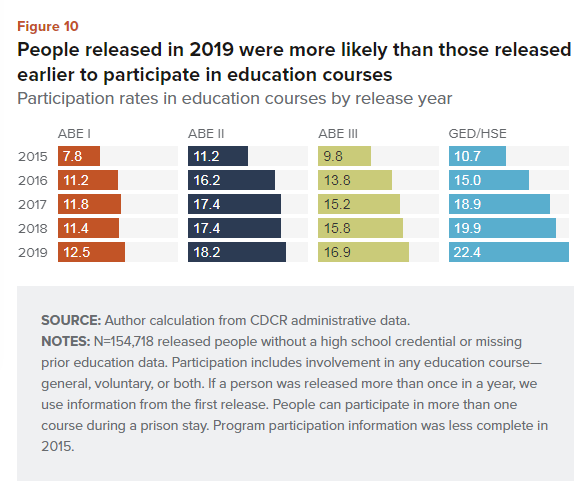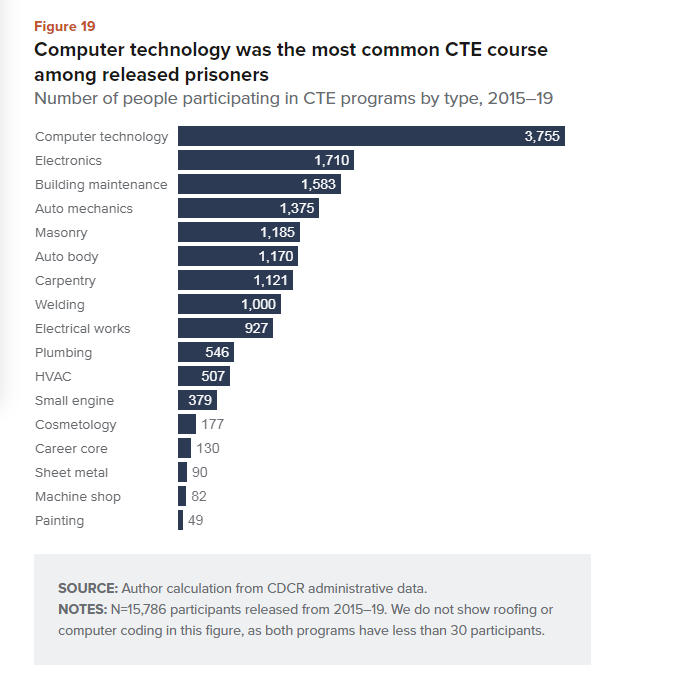OTAN News
California Prison Programs and Reentry Pathways

Full Report * June 2024
The Public Policy Institute of California, (PPIC), released a full report about programs found in prisons and reentry pathways. “In 2005, the California Department of Corrections and Rehabilitation (CDCR) was given a rehabilitative mission, which included providing programs to reduce recidivism by addressing the needs of imprisoned people." This report examined “how effectively the agency...delivered on this mission by describing the education, employment and rehabilitative programs available to people released from prison between 2015 and 2019, assessing program participation, and mapping underlying trends in recidivism outcomes.” In many cases, it’s an adult school where a reentry student seeks help to continue their education.
There are many Key Takeaways from this report. The ones highlighted below most strongly relate to adult education programs across the state.
Participation in Education Programs
According to the research, on average, “released people read at the eighth-grade level and scored at the sixth- to seventh-grade level in math.” Each year assessed reading scores remained stable and math and total battery scores increased for each cohort. “Between 2016 and 2019, total participation in education programs increased from 43 percent to 49 percent as shown below in Figure 10. Additionally, participation in college courses more than doubled between 2015 and 2019."

Employment Programs
CDCR expanded the capacity of CTE (Career Technical Education) and Transition programs dramatically between 2014 and 2019. Opportunities within these programs expanded in different ways “due to the nature of the programs.” When a prisoner reenters into the community, participation rates “tripled between 2015 and 2019.” Computer technology was the most common CTE course among released prisoners. “With nearly 3,800 students, participation in computer technology classes outpaced participation in other CTE courses.” As the economy changes, CTE programs will need to pivot to those industries with the greater need.

The full report available at the top of the page explores more topics in greater depth and detail. For a detailed summation, access the July 25, 2024, Blog Post written by Stephanie Barton.
OTAN Resources
Discover how adult educators working in prisons are preparing people for reentry into our communities.
TDLS 2024 Video Link: From Our Prison to Your Adult School: How formerly incarcerated students transition to adult schools and your role in the process
Digital Leadership Academy: CDCR’s Final Project Video Report

